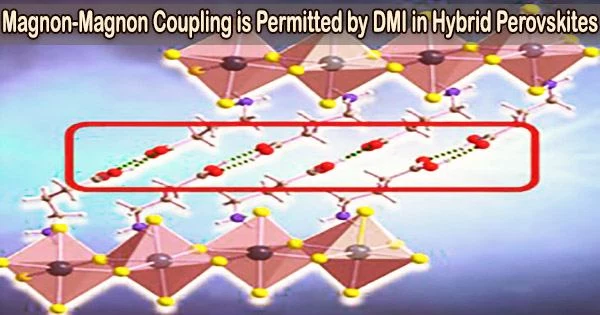Using the Dzyaloshinskii-Moriya-Interaction (DMI), an international team of researchers has produced a mixed magnon state in an organic hybrid perovskite material. The generated substance has the capacity to process and store data for quantum computing.
The research broadens the range of materials that could be used to build hybrid magnonic systems.
Magnons are quasi-particles that control the direction of the electron spin in magnetic materials. According to the direction of their spin, magnons can be divided into two categories: visual and acoustic.
“Both optical and acoustic magnons propagate spin waves in antiferromagnets,” says Dali Sun, associate professor of physics and member of the Organic and Carbon Electronics Lab (ORaCEL) at North Carolina State University. “But in order to use spin waves to process quantum information, you need a mixed spin wave state.”
“Normally two magnon modes cannot generate a mixed spin state due to their different symmetries,” Sun says. “But by harnessing the DMI we discovered a hybrid perovskite with a mixed magnon state.” Sun is also a corresponding author of the research.
We found that the DMI allows magnon coupling in copper-based hybrid perovskite materials with the correct symmetry requirements. Adding different cations creates different effects. This work really opens up ways to create magnon coupling from a lot of different materials and studying the dynamic effects of this material can teach us new physics as well.
Andrew Comstock
This was achieved by the researchers by introducing an organic cation into the material, which led to the formation of an interaction known as the DMI. In essence, the DMI causes the material’s symmetry to be broken, enabling the spins to mingle.
The group used an octahedral-shaped, copper-based, magnetic hybrid organic-inorganic perovskite. These octahedrons have a variety of tilts and deformations. When an organic cation is added, the material’s symmetry is broken, forming angles that permit the various magnon modes to couple and the spins to mix.
“Beyond the quantum implications, this is the first time we’ve observed broken symmetry in a hybrid organic-inorganic perovskite,” says Andrew Comstock, NC State graduate research assistant and first author of the research.
“We found that the DMI allows magnon coupling in copper-based hybrid perovskite materials with the correct symmetry requirements,” Comstock says. “Adding different cations creates different effects. This work really opens up ways to create magnon coupling from a lot of different materials and studying the dynamic effects of this material can teach us new physics as well.”
The work appears in Nature Communications and was primarily supported by the U.S. Department of Energy’s Center for Hybrid Organic Inorganic Semiconductors for Energy (CHOISE).
Chung-Tao Chou of the Massachusetts Institute of Technology is co-first author of the work. Luqiao Liu of MIT, and Matthew Beard and Haipeng Lu of the National Renewable Energy Laboratory are co-corresponding authors of the research.





